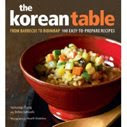The North Atlantic cod is the fish for which Boston is famous, the one after which the Cape is named, the main ingredient in our fish chowder. According to Mark Kurlansky, author of "Cod, a Biography of the Fish that Changed the World" (Penguin), the control of cod also has led to war and prosperity. Long before explorers from Northern Europe came looking for it in the 15th century, it was a dietary staple for Native Americans in this region.
These days, cod is again at the center of a clash, this time between scientists and fishermen; both want to preserve cod stocks, but they cannot agree yet on how to solve the problem. While some cod stocks are coming back, their numbers remain at or near historic lows.
Meanwhile, cod is still in fish markets and at seafood counters and is the all-purpose white fish. It's firm-fleshed and versatile, not "fishy" in flavor or smell, and stands up well to all methods of cooking. Even people who normally don't like fish like cod. Cod liver oil is high in Omega 3 fatty acids and natural Vitamin D, and is touted for its nutritional value. When salted and dried, it is known as salt cod or bacalao and is found in many Mediterranean cuisines. For example, a dish using salted cod is a Christmas tradition in Italy.
Marty Hagerty has been working around fish for a long time. His dad opened Fresh Pond Seafood, the unassuming fish store just off the rotary at Route 16 and Concord Avenue in Cambridge, more than 25 years ago. Weathered gray shingles and a sinking roof might make you think this store is closed, but Hagerty's large signs tell you otherwise.
His hands are red from cutting cold fish. He holds up a whole cod he picked up that morning at the fish auction on the Boston pier, a daily event.
"We cut most of the fish here," he says, as he deftly draws his filet knife along the spine, creating two long filets. He then slips the knife between skin and flesh, and scrapes as he removes the skin and cuts the filet into smaller hunks. The thicker end becomes a "hotel" cut good for baking. The thinner ends are good for broiling and chowder. "I like it with some breadcrumbs, buttered and baked," Hagerty says.
Then there is "scrod." According to Hagerty, any cod from 22 inches to 4 pounds is "scrod cod." Anything weighing 4 to 10 pounds is "market cod," and anything larger than 10 pounds is "large cod."
Max Harvey, seafood manager and buyer for Jasper White's Summer Shack, says "scrod could be haddock, cod, pollack, or hake," adding that "the very best cod is caught with long lines off Cape Cod."
Harvey likes the taste and texture of cod and enjoys roasting the smaller ones whole at home. He stuffs them with herbs and vegetables, or roasts the "loins" wrapped in bacon. Harvey says fresh cod will keep for two or three days, wrapped well and stored in the back of the refrigerator.
"If you want to get picky, put a plastic bag of ice on top of the fish," he instructs.
© Copyright 2003 Globe Newspaper Company.
Cod simmered in fresh tomato sauce
1 pound cod, cut into 4 pieces
salt and pepper
3 tablespoons olive oil
1 small onion, finely chopped
4 fresh basil leaves, torn into pieces
1 clove garlic, minced
5 or 6 plum tomatoes, cored and chopped (no need to remove skins or seeds)
1 teaspoon sugar
1/4 cup fresh parsley, chopped
red pepper flakes to taste
2 cups fresh spinach, washed and stem removed.
1. Sprinkle the pieces of cod with salt and pepper. Set aside.
2. In a medium-size skillet, heat the olive oil. Add the onion and basil, and a little salt and pepper. Saute until onions are soft.
3. Add the garlic, chopped tomatoes, sugar, parsley, and red pepper flakes, if using. Cook about 8 minutes on medium heat until the tomatoes are soft and sauce is thickened, stirring occasionally.
4. Nestle the pieces of cod into the tomato sauce, spooning sauce over the fish.
5. Cook 8-10 minutes until the fish is white.
6. Place spinach on top of the fish and cover. Cook until spinach has wilted over the cod, about 2 minutes.
7. Serve with slices of French or Italian bread, for soaking up the sauce.
Fish chowder
Like many chowders, this soup tastes even better the next day.
Serves 8.
5 slices bacon, roughly chopped
1 tablespoon butter
2 medium onions or 1 large onion, chopped
4 medium potatoes cut into chunks
3-4 cups water
2 bay leaves
1 teaspoon thyme
salt and pepper to taste
2 tablespoons flour plus 3 tablespoons water
2 pounds thick cod, scrod, haddock fillets, cut into 3- or 4-inch chunks
2 cups light cream or milk (preferably not skim milk)
salt and pepper to taste
diced bacon and fresh parsley for garnish
1. Place bacon in a large pot and cook until almost crisp. You will have rendered about 2-3 tablespoons bacon fat.
2. Remove the bacon with a slotted spoon and reserve.
3. Add the butter and chopped onions and cook for 5 minutes. Add the potatoes and cook for an additional 5 minutes.
4. Add enough water to cover the potatoes. Add the bay leaves, thyme, salt, and pepper. Bring to a simmer and cook until potatoes are just slightly undercooked.
5. Mix the flour and water in a jar and shake until well mixed. Slowly add to the stock and heat until stock begins to thicken, approximately 2 minutes.
6. Place the chunks of fish into the thickened stock and cook for about 8 minutes until the fish turns white.
7. Add the cream or milk and stir carefully so as not to break up the fish. Heat the soup until hot and steaming but do not bring to a boil. Turn off and let sit 15 minutes. Reheat until steam appears.
8. Divide into bowls and sprinkle with chopped parsley, bacon, and a few twists of fresh black pepper. Adapted from "50 Chowders" by Jasper White (Scribner).



